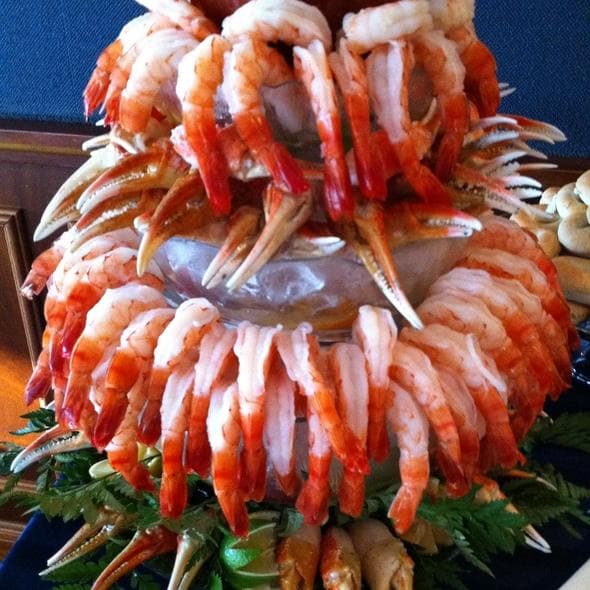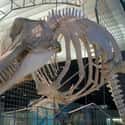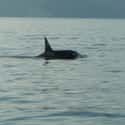-
(#7) Killer Whales Are Seen As Symbols Of Power In Native American Culture
Orca are a common image on the iconic totem poles native to the Northwest coast of North America. Given its prowess in combat and its sheer size, the orca is a powerful symbol for different Native American groups.
The Tlingit view killer whales as a symbol of power and strength, and believe that sighting one is considered a momentous omen. Though they hunted other kinds of whales, the Tlingit saw the killer whale as a special protector of humankind and never hunted the giant black-and-white mammals.
The Kwakiutl tribes believed that the souls of ocean hunters turned into killer whales upon their death, just as the souls of forest hunters turned into wolves. For this reason, there were many special rituals regarding the killing of a killer whale, so that its spirit could be reborn as a human once again.
-
(#12) Orcas Are At Risk Of Endangerment
While orcas are thought to be the most widespread mammal worldwide (after humans), they're still at risk of endangerment. An exact count as to the numbers of their population is difficult to ascertain, since pods are known to move through wide ranges of ocean. However, it's clear what's killing them: prey depletion. As bio-contamination, overfishing, increased ship traffic, and habitat loss continues, orcas run into the risk that there will not be enough prey to support their population.
Another factor that contributes to endangerment is the whaling industry that still exists in parts of Greenland, Japan, Indonesia, and some of the Caribbean islands. Additionally, targeted live captures, such as the ones that have taken place on behalf of SeaWorld and marine parks in Russia, have greatly impacted the Pacific Northwest and North Atlantic populations. They were heavily targeted and have yet to reach pre-capture numbers.
If you are concerned with the plight of the orca, you can “adopt” an orca through the WDC.
-
(#3) Pods Of Whales Have Different Dialects Of Communication
Much like other pack animals and animals of high intelligence, orcas depend on a complex and diverse communication system. Much like their dolphin relatives, orcas use a series of clicks, whistles, and chirps to cut through the water and communicate with one another. Orcas are able to create these sounds with the use of a compact tissue in the nasal cavity and hear them with their nearly invisible, highly developed ears located behind their eyes.
Scientists continue to study the sounds that killer whales make, and while much is still unknown, they have discovered that all pods create completely different sets of sounds from other pods. When orcas are born, they are able to employ a very rudimentary repertoire of sounds, and learn their pod’s “dialect” over time. This use of language and its variance across pods from all over the world proves just how intelligent these marine mammals are.
In fact, the differences in prey preference, hunting practice, and communication has lead some scientists to believe that orcas are the only non-human mammal whose evolution is driven by culture, as opposed to natural selection.
-
(#8) Orcas Have Giant Teeth That Can Tear Apart Skin And Bone
Not only are orcas incredibly skilled hunters, but they're also adept killers. Orcas have massive three-inch teeth that line their jaws. These cone-shaped teeth number between 40 and 56, depending on the size of the whale. These teeth are not only useful to hold their prey in their mouth and tear at their flesh, but are so sharp that they can cut through thick skin, blubber, and bone. Whales do not chew their prey, but instead eat it in massive, bloody chunks.
-
(#1) Orcas Have Complex Hunting Practices
With the word “killer” in the name, it’s safe to assume that the killer whale is a skilled marine hunter. Orcas hunt in pods, a family group which has been known to number as many as 40 individuals. Pods can be permanent or temporary, and depending on which they are, may hunt different prey and employ different hunting techniques.
When hunting seals, who rest on ice floats, orcas have been known to create massive waves to knock their prey off before attacking. For sharks, the whales crash down on the shark's head and flip them over, forcing sharks into something scientists call “tonic immobility.” Basically, it's a 15-minute state of paralysis, during which the orca suffocates and kills the shark. This displays an incredible knowledge of shark biology.
For schools of fish, instead of chasing down individuals, killer whales will create a net of air bubbles and belly flashes to herd them into a tight ball before feeding. They even attack whales much larger than themselves, killing gray, humpback, and even blue whales. Orcas force themselves on top of the much larger, less agile, whale and keep them from breaching, preventing the larger whale from breathing. Finally, when hunting sea lions and elephant seals, orcas will literally storm beaches, launching themselves onto the sand and snatching their prey before dragging them into the deadly depths of the ocean.
-
(#11) Orcas Are Scary Fast In Water
Orcas are among the fastest swimming marine mammals in the world. While they can cruise consistently at a speed of about eight miles per hour, they can reach a blistering 28 miles per hour when pursuing prey. Killer whales are also highly maneuverable and can change direction underwater quickly to continue pursuit of their much smaller prey.
New Random Displays Display All By Ranking
About This Tool
Killer whales are the largest species in the dolphin family. They are fierce carnivores, good at hunting prey, and are natural enemies of animals such as penguins and seals. Sometimes they even attack other cetaceans, even great white sharks, which can be called the kings of the sea. Killer whales are distributed in almost all ocean areas and have almost no natural enemies.
Despite the increasing use of the name "orcas", the traditional name "killer whale" is most commonly used by English-speaking scientists. The random tool describes 12 fascinating facts about killer whales that prove they are the most brilliant hunters in the ocean.
Our data comes from Ranker, If you want to participate in the ranking of items displayed on this page, please click here.















